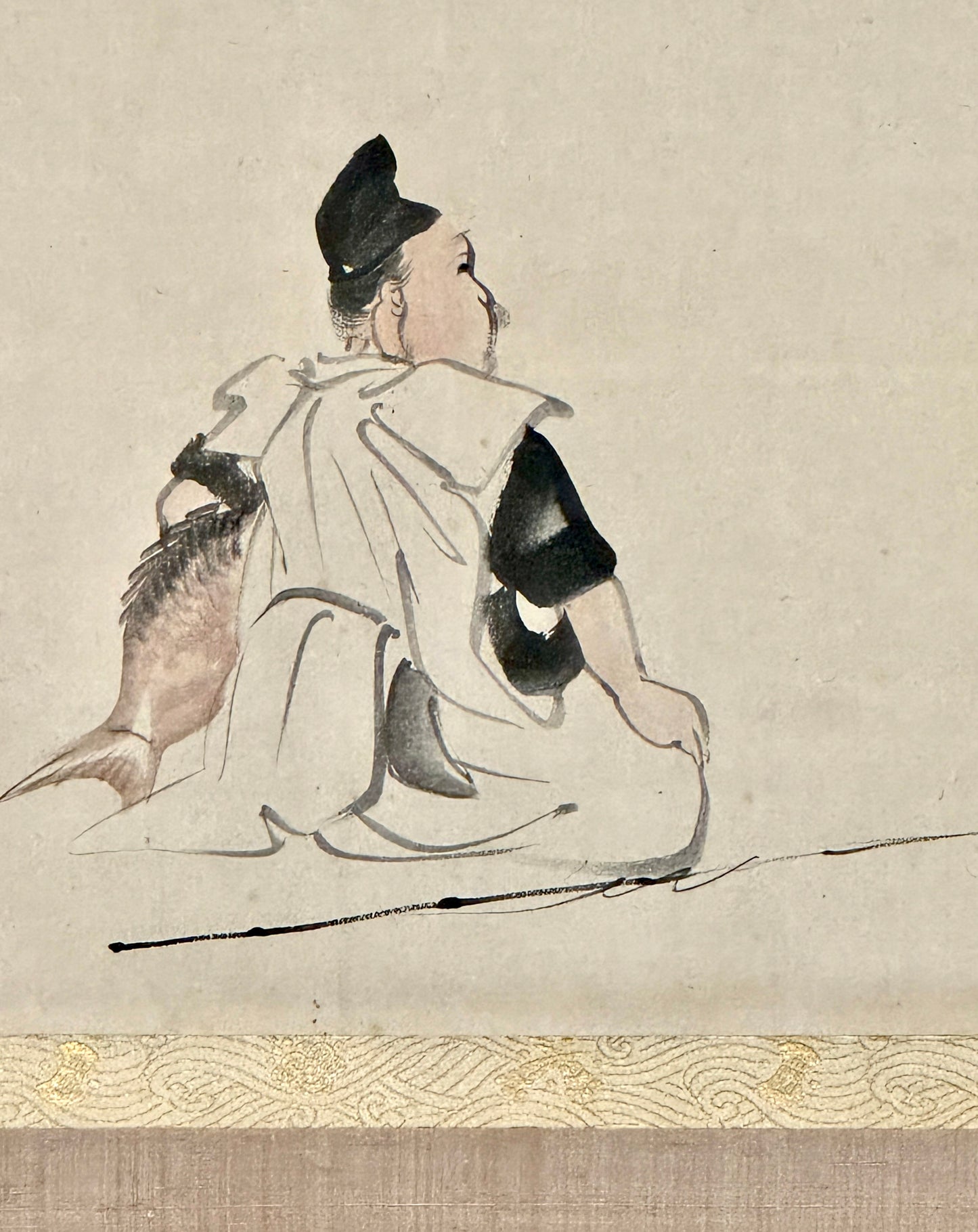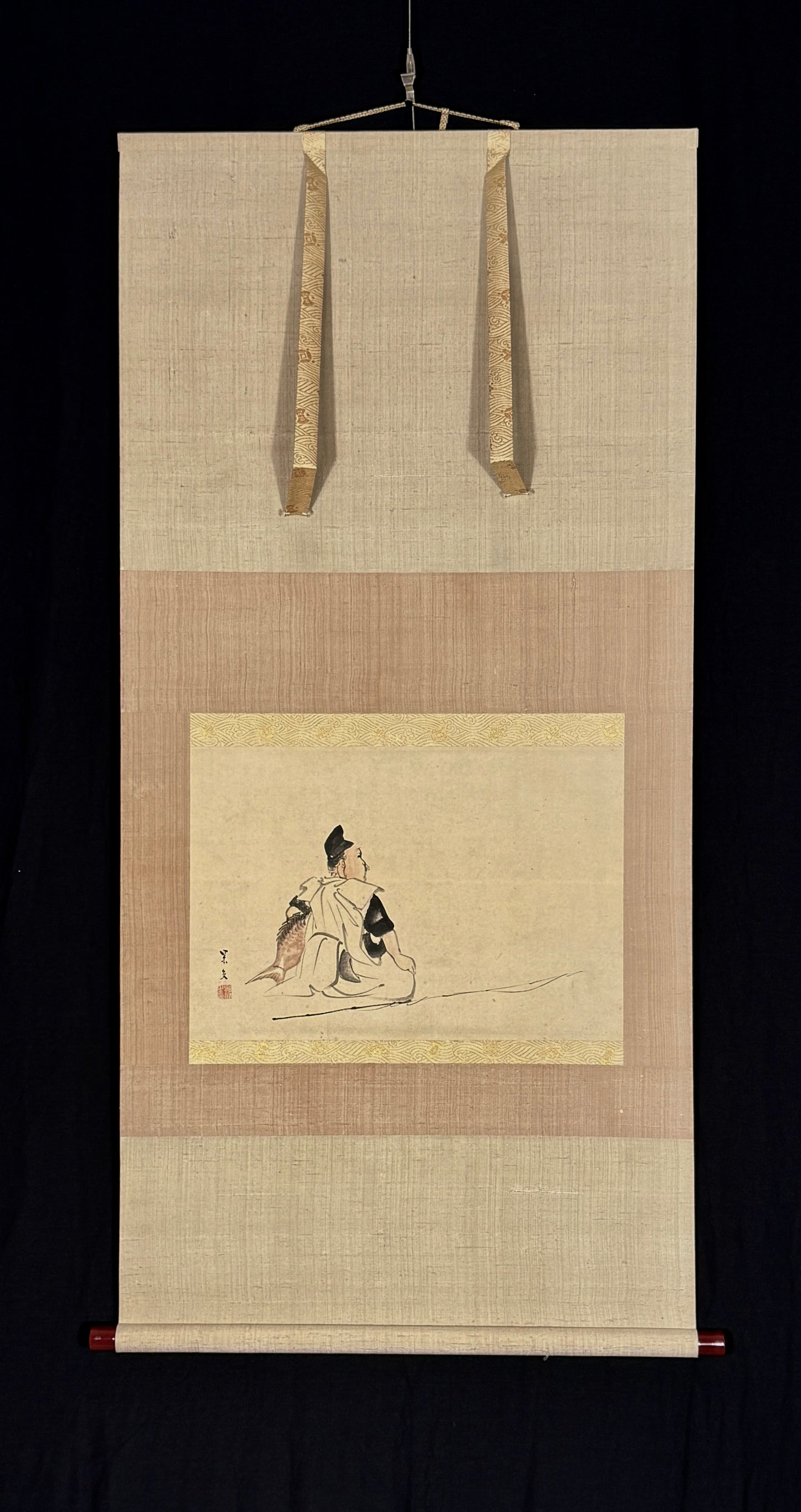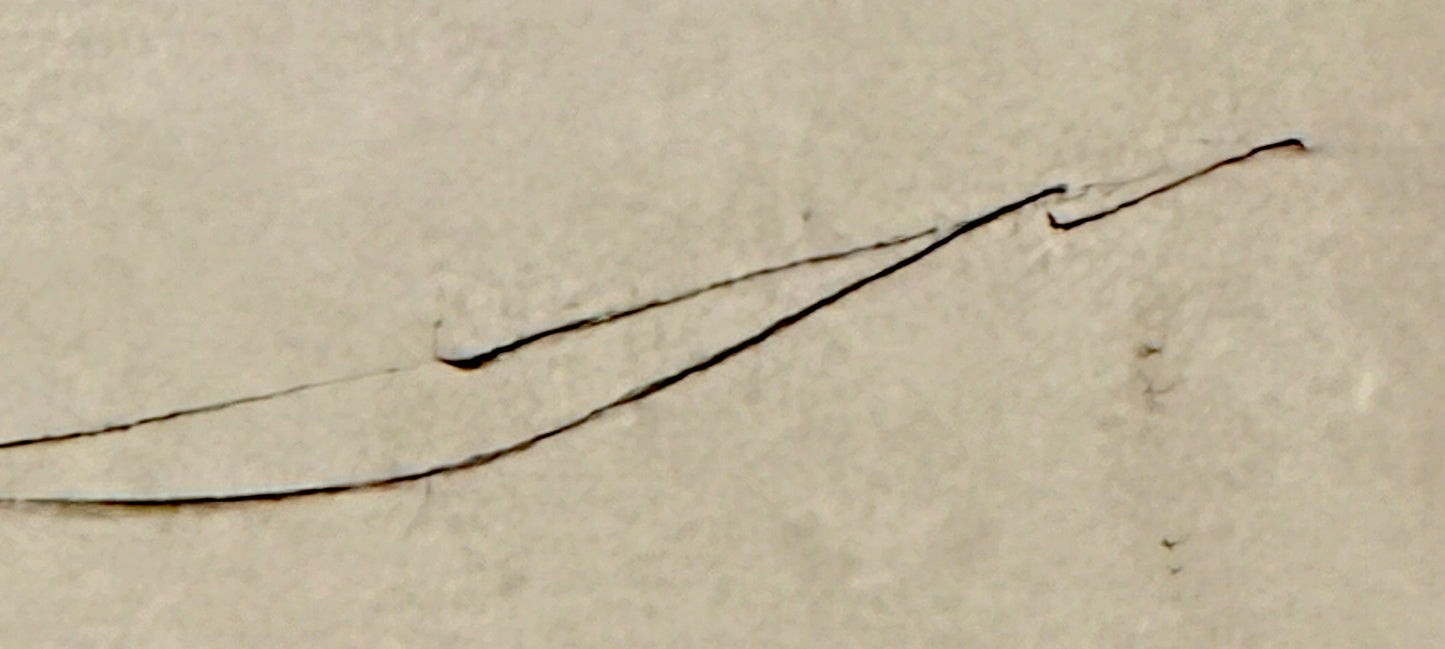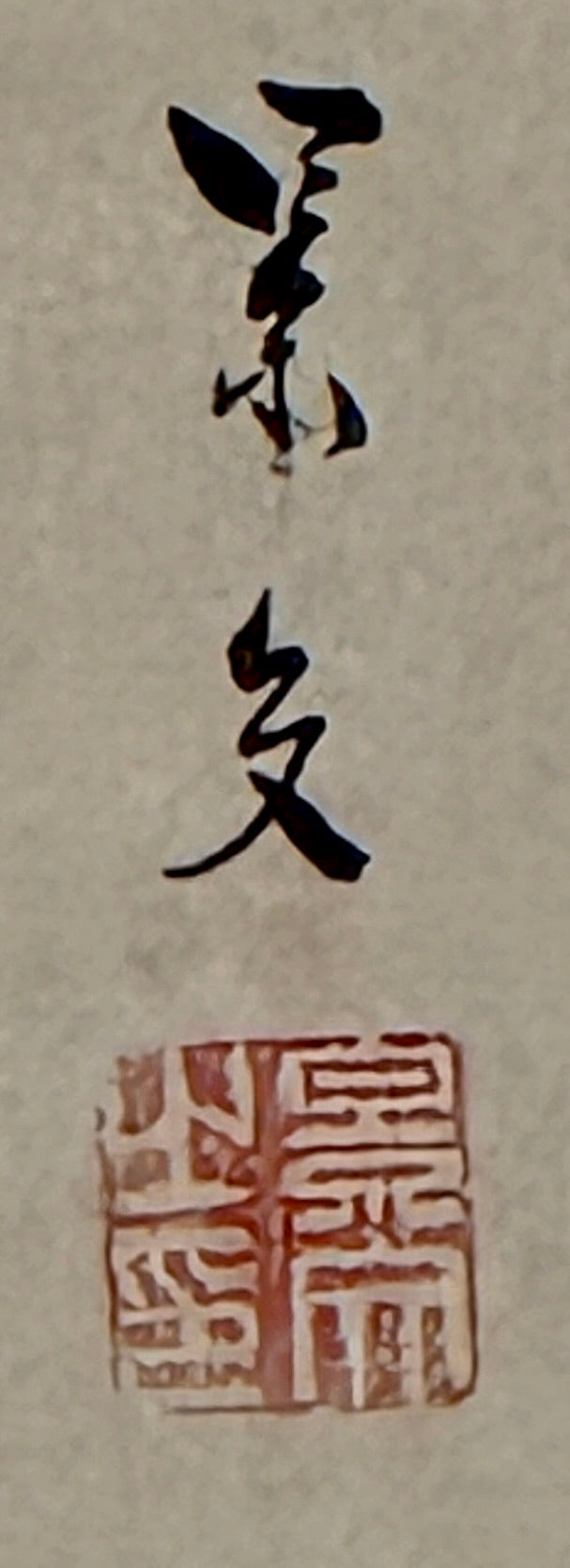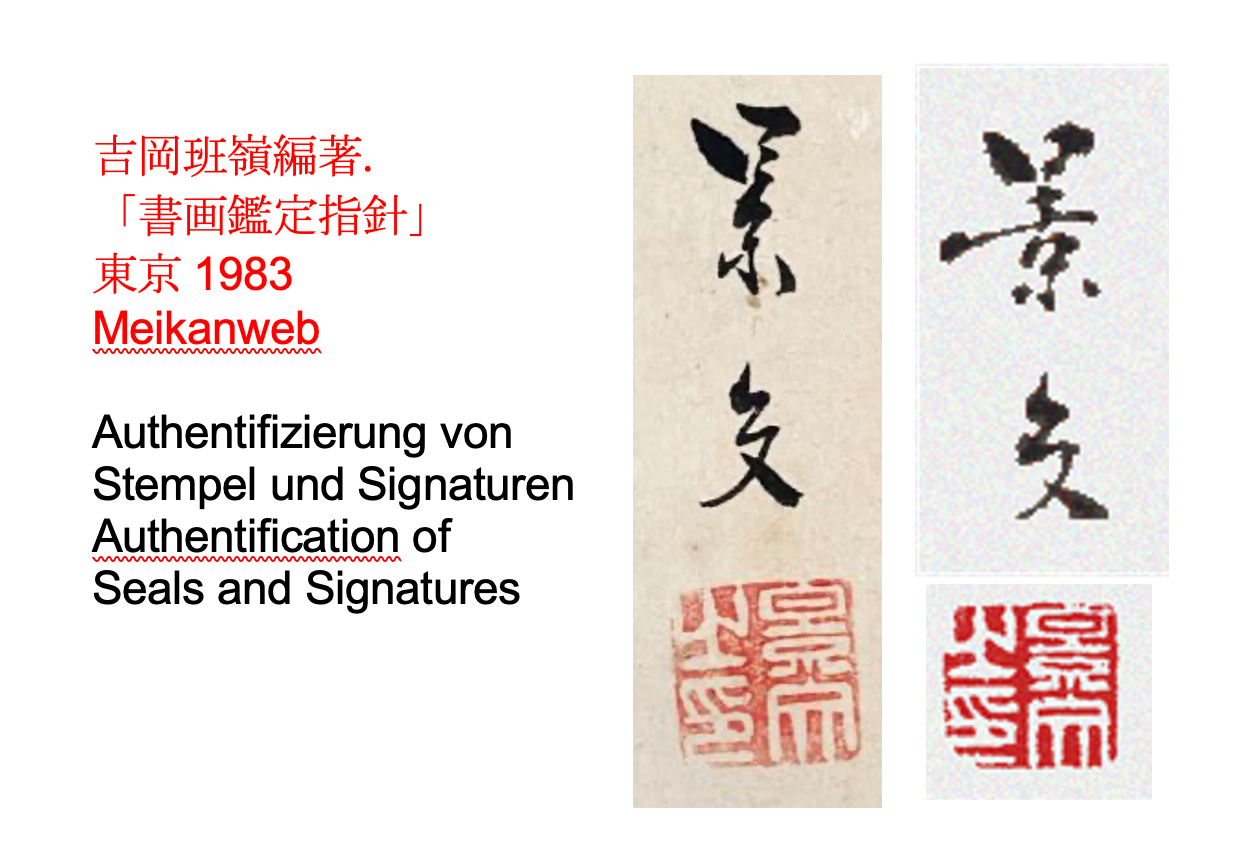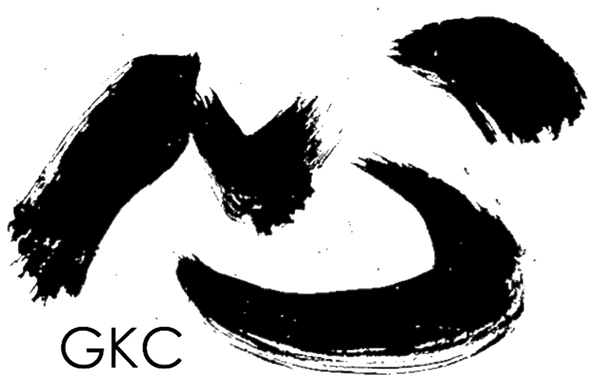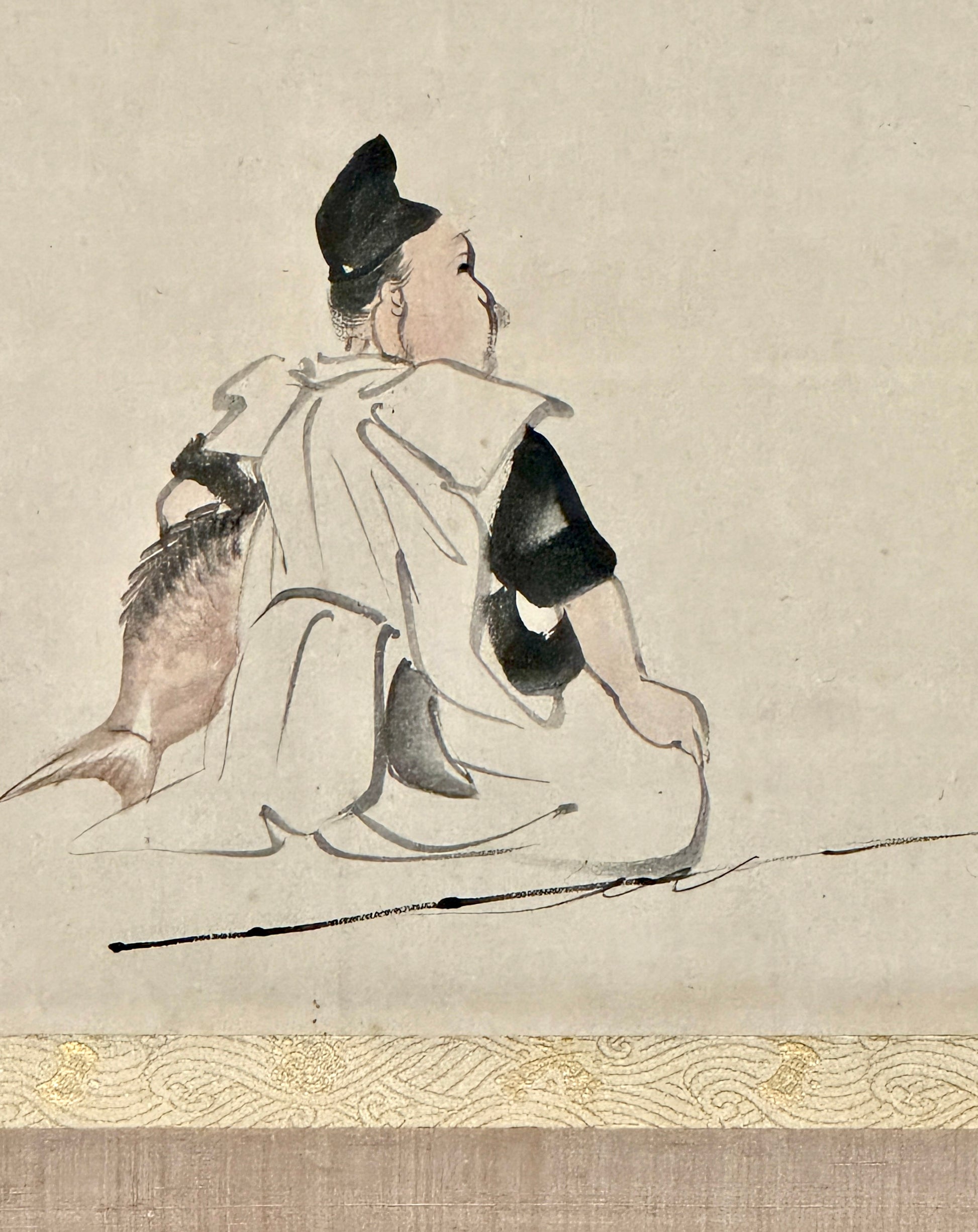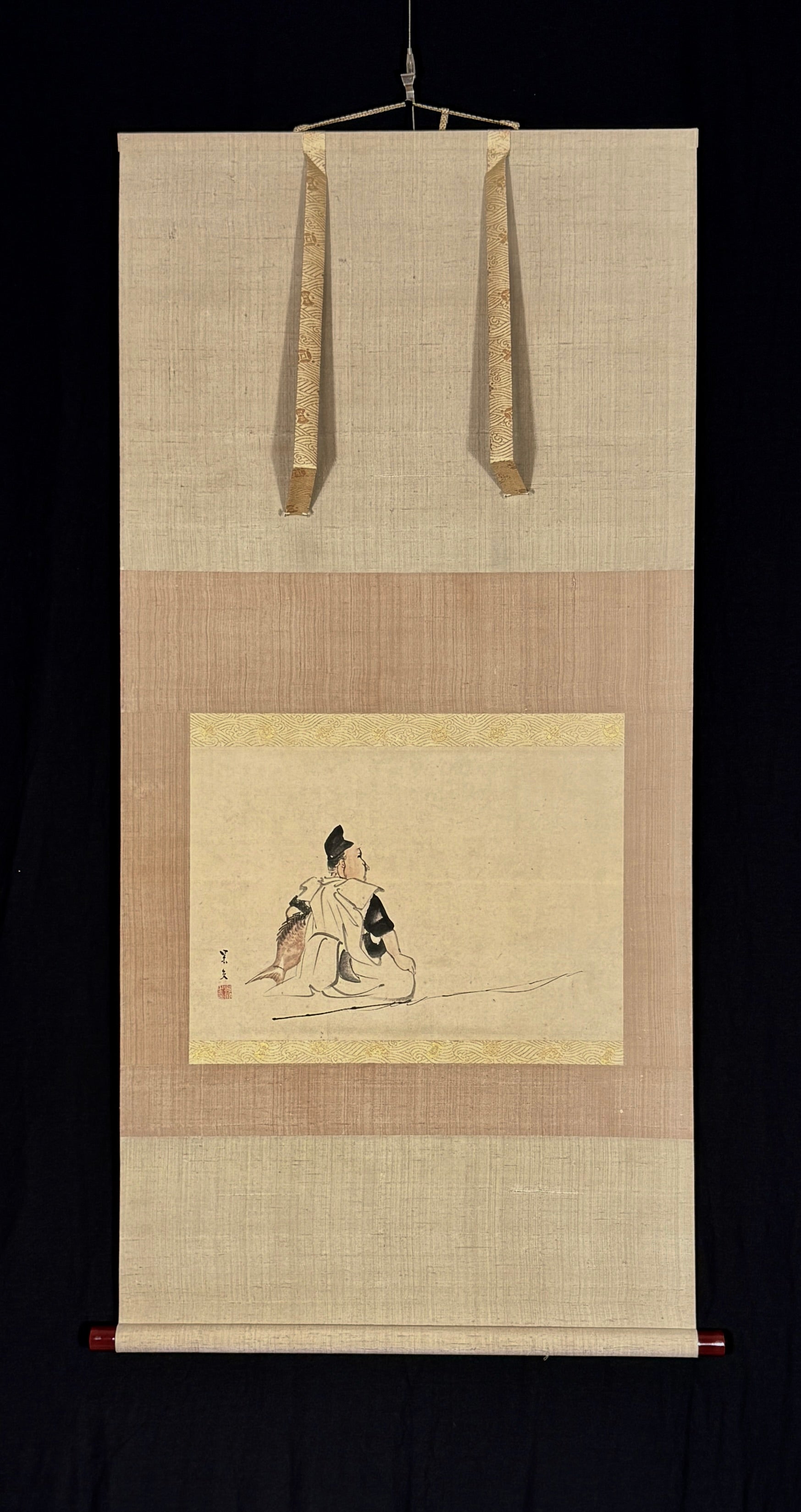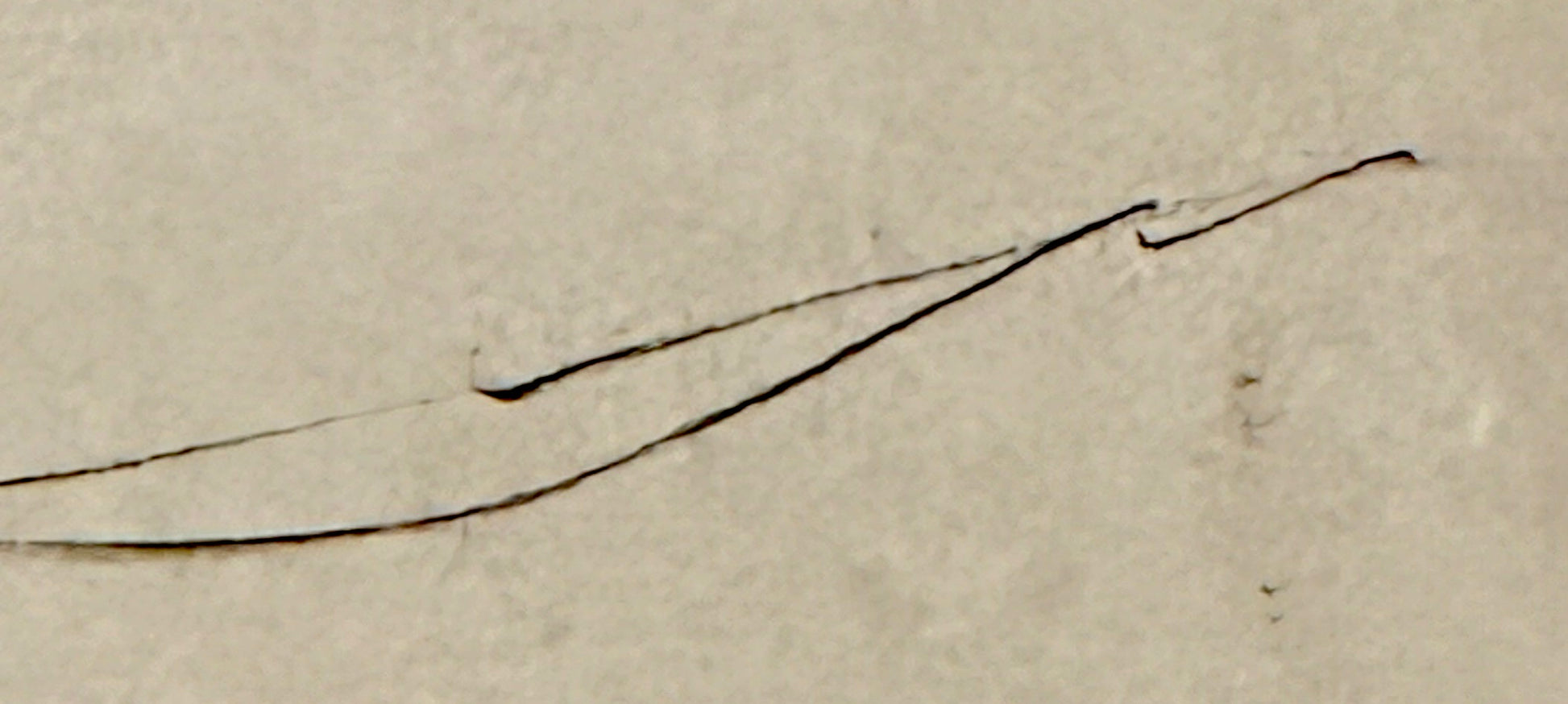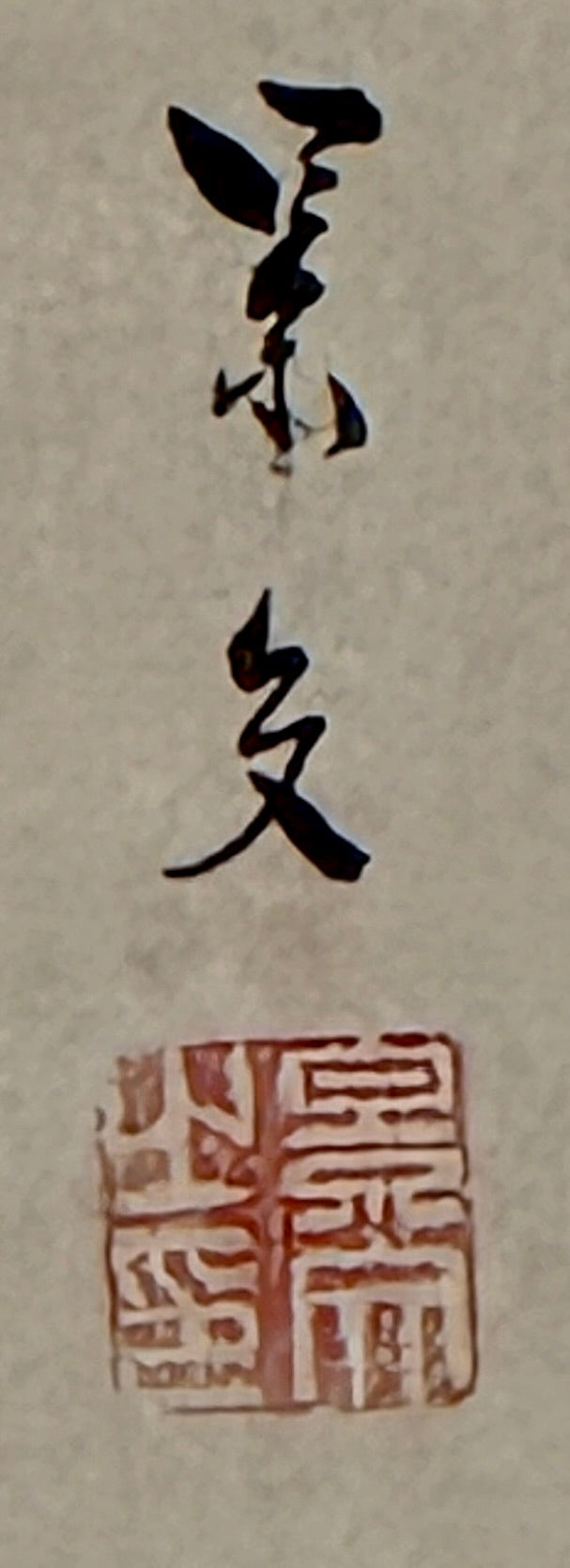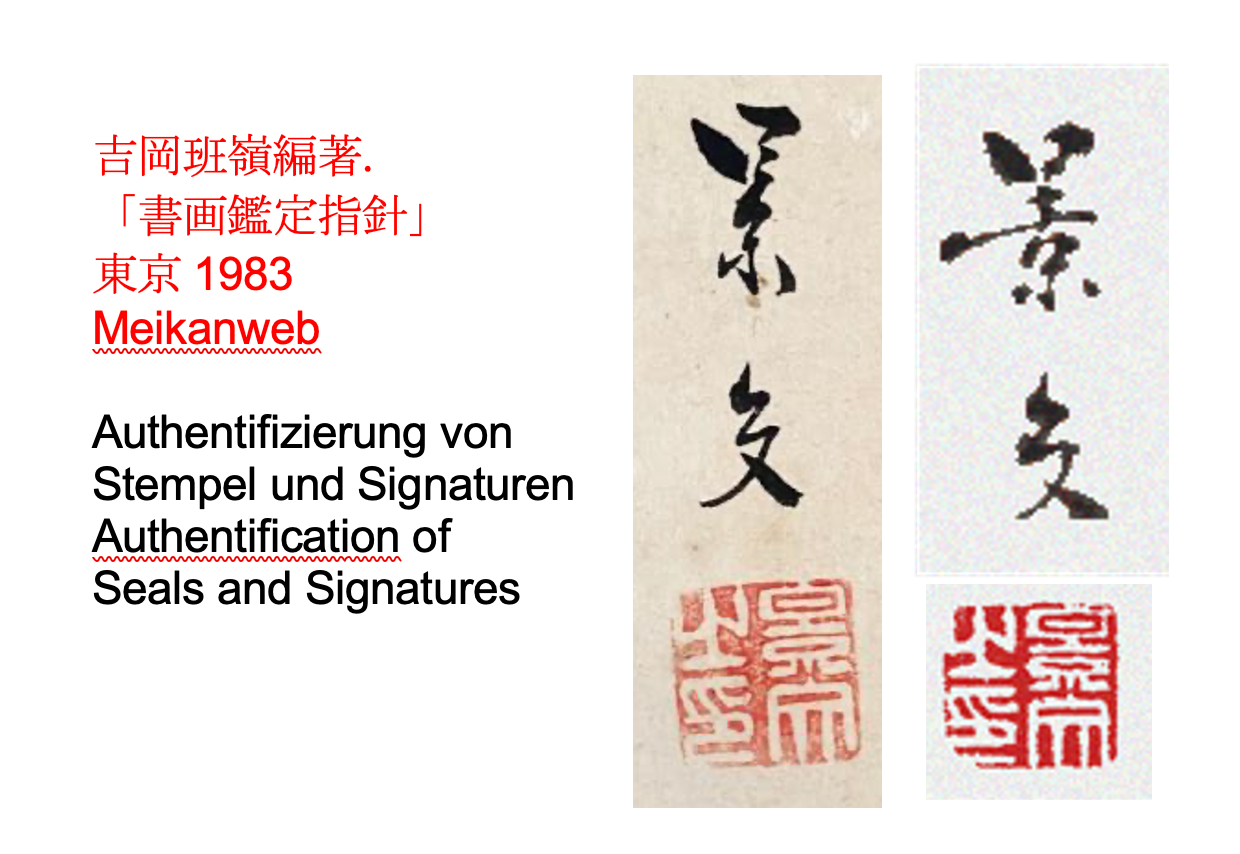Guignard Kyoto Collection
Ebisu | Matsumura Keibun 松村景文 | 1779-1843
Ebisu | Matsumura Keibun 松村景文 | 1779-1843
Couldn't load pickup availability
As a painter, Matsumura Keibun's aesthetics are the epitome of classical Kyoto art in the 19th century. He was the much younger half-brother of Matsumura Goshun, with whom he founded the Shijō school (named after the location of the studio on the "Fourth Street" Shijō in the center of Kyoto). Both Goshun and Keibun were influenced by the outstanding painting genius of the 18th century, Maruyama Ōkyō (1733-1795). This painter was known for his turn to realism. Keibun became famous for his birds and flowers painted from nature. But the magic of Keibun's painting remains the elegance of his lines and colors. The formal composition of his pictures is always convincing.
This picture depicts Ebisu, one of the Seven Lucky Gods of Japan. These lucky gods all have a specific aura. Ebisu is the god of fishermen and traders and is not spiritually detached like some of his fellow gods. He has his sleeves rolled back and a large sea bream under his arm. This fish is called tai in Japanese, and this is reminiscent of the word medetai "auspicious" - the sea bream is part of the New Year's meal, when the gods of luck are particularly celebrated.
Kyoto, the old imperial city, was (and still is) considered to be the place in Japan where people have the best aesthetic taste. Ebisu, with his uncomplicated nature, is often portrayed as a laughing country boy. Such an uncouth manner is not something that is appreciated in Kyoto, and so he is painted from behind here. This means that you don't have to look at an exuberantly laughing fisherman's face. But the choice of this back view is not just Kyoto arrogance: Keibun wants the viewer to look into the distance, into the future, with the god of luck. This makes a much stronger impression on the viewer than a frontal encounter.
A testament to Keibun's extremely delicate art is the finesse with which he paints the fishing rod. A more sensitive brushstroke is hard to imagine. The fishing rod also helps to widen the format and to give free space to look into the void, where one can sense what is to come. The fishing rod can almost be seen as a signpost to the future.
